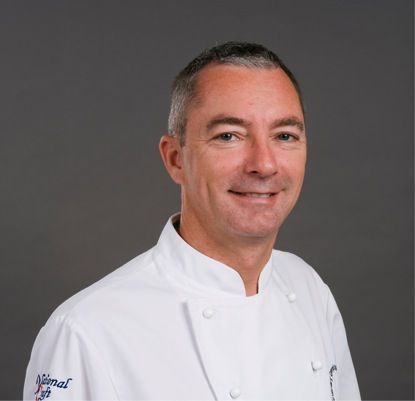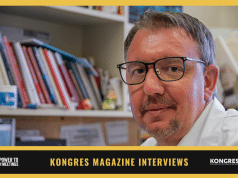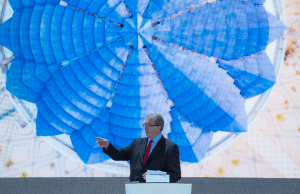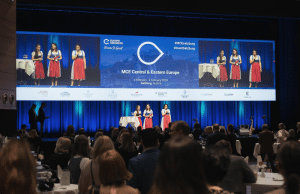Relationships – relationships – relationships: Transitioning from a service provider to vital and trusted business partner.
The physical experience is becoming more important, so providing interactive options for diners to engage in a different way with food and drink is a growing trend. Molecular elements with liquid nitrogen and various other culinary techniques is becoming popular.
Q: Event catering has changed a lot over the past two decades. In your view what have been the key factors?
The days of a ‘pie and a pint’ have well and truly disappeared and event catering as we know it has changed beyond all recognition. Key factors have included people’s expectations when dining out generally and the creativity at more exclusive events filtering into a wider arena. Hospitality offered by clients to key customers and guests also creates demand for a higher level of service and cuisine, where caterers must meet these expectations or face difficulties in retaining their contracts. Socially food and wine is a status symbol which when coupled with the often high costs of attending an event focuses guests on what they are eating and drinking.
These demands have encouraged catering providers to be extremely creative and offering an extra ‘experience’ in addition to the event.
Celebrity Chefs are now a regular fixture at leading events, taking their own restaurant to the venue as a pop up or acting as consultant for the event. Raymond Blanc or Michael Caines at Royal Ascot, along with casual dining experiences from Loch Fyne or champagne houses, have become synonymous with this particular racing event. In addition the food offer from Sodexo Prestige to support these chefs and the other restaurants is of the highest standards from the in-house team. This standard of food at events is not exclusive to those paying top prices, but is exciting and ‘on trend’. Street Food and tasting options are available to all. With such progress there is little chance of anything other than a great culinary experience at events for the future.
Q: How much have participants’ expectations changed?
All stakeholders within the event world have enhanced expectations. Clients demand more from catering providers – to be highly creative, dynamic, innovative and to bring to life many ideas that transfer from the high street or other parts of the world. Similarly, customers, used to dining out and attending other events run by different companies, have seen what is on offer and begin to expect this at all events. All of this drives innovation and, ultimately, quality.
Q: How far can the top chefs’ concept be taken on at catering for events?
More and more showcase events and event venues are either using Celebrity Chefs or consultant chefs at some level. Where they are less visible it is to ensure style and standards are developed and maintained for an event. However, it is deemed to be a considerable attraction to guests and the paying public to have a well-known chef cooking or involved in creating a bespoke experience.
Bringing a recognised chef or Michelin standard cuisine to an event adds to the excitement and creates a special ‘money can’t buy’ element to the guests’ experience, which is seen as adding significant value. In some cases the Chef concept can be taken further, into a profit share or franchise options also
Q: What parts of the world are seen to offer the best growth potential?
Certainly the UK is seeing excellent growth where event catering, sports, music and the wider arts are concerned. Corporate hospitality is also regaining lost ground in Europe and the US after the financial crisis. There are tremendous opportunities still to be exploited, particularly with events that appeal to a mass audience, more accessible to families etc. …
Opportunity and investment have also combined to dramatic effect in the BRICS countries where, over a 10-year period, they are hosting three FIFA World Cups, Olympic and Paralympic Games and a variety of other major events, providing a global platform and creating long-lasting economic and social implications for the region. For example, Brazil will have hosted the 2014 FIFA World Cup, the Copa America in 2015 and the Olympic and Paralympic Summer Games in Rio de Janeiro in 2016.
Asia’s growth and the emerging middle-class population will reach household incomes levels associated with increased travel and entertainment expenditure and consequently changing spending behaviours. Asia Pacific’s proportion of the global middle class population explodes from just 22% to 66% by 2030 with spending due to increase from 23% to 59% by 2030.
Q: What do you see as the biggest challenges?
- Understanding the ‘value chain’ and expanding our service offerings in targeted areas to support our clients’ core activities.
- Relationships – relationships – relationships: Transitioning from a service provider to vital and trusted business partner.
- Global customer view and insight supported by technology, CRM and new sales and marketing channels to support clients in increasing attendance and optimising venue utilisation.
- Continued re-investment to improve the customer experience.
Q: What will be the top catering trends for 2015?
Theatre is the name of the game. The physical experience is becoming more important, so providing interactive options for diners to engage in a different way with food and drink is a growing trend. Molecular elements with liquid nitrogen and various other culinary techniques are becoming popular. However, the provenance, sourcing, seasonality and expertly executed dishes is also expected and becoming a requirement on menus. Various influences from the high street and independent operators e.g. Peruvian or regional Asian food done to the highest standards, also make an appearance. Retail offers at events catering for the public where artisan brands are is growing.
Q: Your advice for event organisers?
Look further afield, to other countries and other segments of the industry for ideas and inspiration. Shape concepts and innovate and invest in training and developing your staff. Explore relationships with experts, retail, chefs and small operators to add value to your portfolio.
GETTING PERSONAL
Q: Tell us about your career path. How did you get your start?
I was always interested in cooking. Originally from Limerick in Ireland, cooking and baking with my grandmother is a fond early memory. I worked in various hotels and restaurants while attending college in Galway before travelling to London to work at the then Penta Hotel near Heathrow.
Q: Moments to remember?
- Meeting the Queen Mother, who wished us luck as I represented the UK on the British Culinary Team before winning my first Gold medal at The Culinary World cup in Luxembourg. Then returning to win Gold as an individual at the Culinary Olympics and then again the Culinary World Cup four years later.
- Being National Chairman of The Craft Guild of Chefs and of The Cookery and Food Association, the largest Chefs organisations in the UK.
- Running the National Chef of the Year Competition and creating the Young National Chef of the Year Competition, both of which are now regarded as the most prestigious in the UK today.
- Receiving a CATEY award for services to the Catering and Hospitality industry in 2014.
- I have helped run FutureChef, a young persons cooking competition, for the past 12 years. This year almost 8,000 young (12-16 year olds) took part.
- Meeting my current fiancée who will become my wife on August 1st.
Q: Favourite drink?
A delicious red wine, discovering wines of the new or old world depending on the occasion and location. And obviously a great Guinness, but only in Ireland in a country pub!
Q: Favourite food?
Anything done with care and passion – it’s bound to be delicious. Turbot for elegance and my grandmothers’ soda bread for nostalgia.
Q: Favourite event location?
Royal Ascot – it’s in a class of its own.














